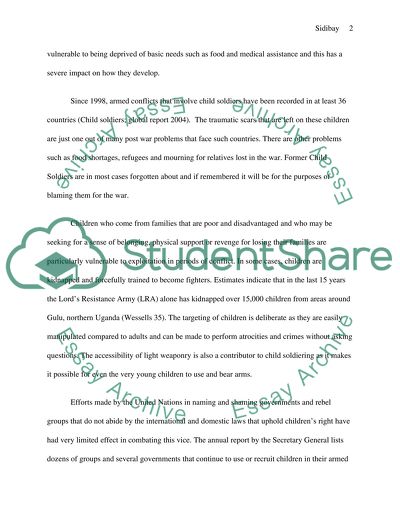Cite this document
(“Child Soldier Research Paper Example | Topics and Well Written Essays - 4250 words”, n.d.)
Retrieved de https://studentshare.org/english/1397631-child-soldier
Retrieved de https://studentshare.org/english/1397631-child-soldier
(Child Soldier Research Paper Example | Topics and Well Written Essays - 4250 Words)
https://studentshare.org/english/1397631-child-soldier.
https://studentshare.org/english/1397631-child-soldier.
“Child Soldier Research Paper Example | Topics and Well Written Essays - 4250 Words”, n.d. https://studentshare.org/english/1397631-child-soldier.


